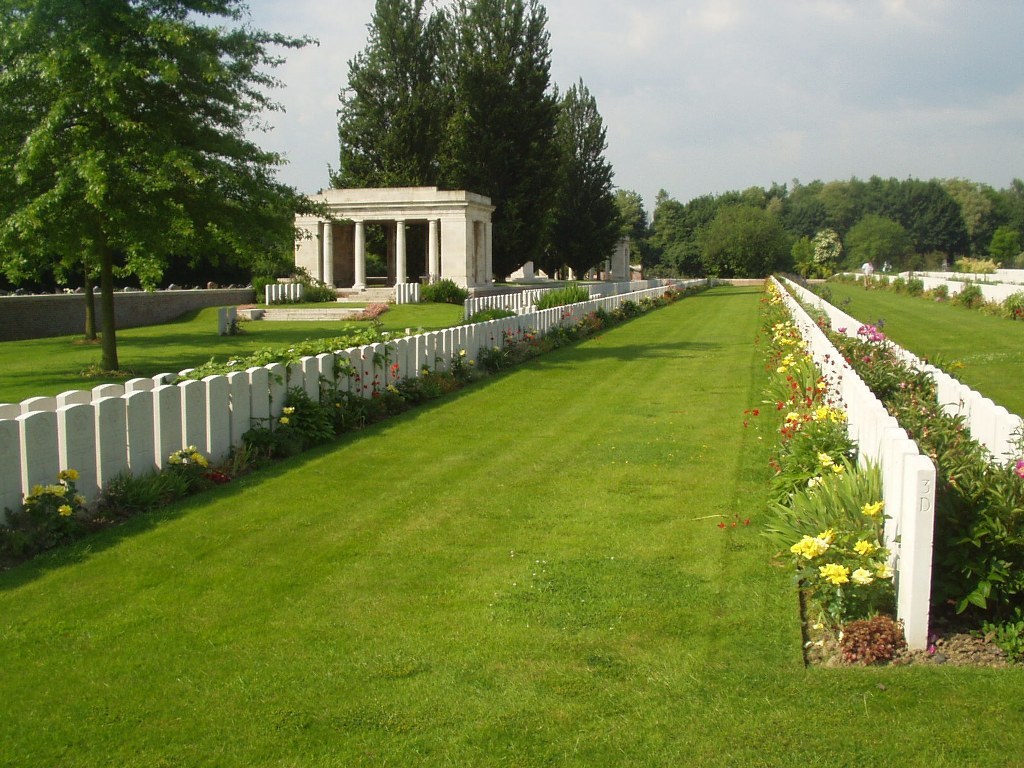George Dean
Date of birth: 1892
Date of death: 2.8.1915
Area: Brotherton
Regiment: York & Lancaster
Family information: Son of Mrs R Jolliffe of Marsh House, Low Street, Brotherton
Rank: Private
Service number: 11693
War Service
George enlisted when war broke out and joined the 7th Battalion of the Yorkshire & Lancaster Regiment.
The 7th (Service) Battalion (Pioneers) was formed at Pontefract in August 1914 as part of K2 and became part of 51st Brigade in 17th (Northern) Division.. This Division was established by the Northern Command in September 1914, as part of the Army Orders authorising Kitchener's Second New Army, K2. Early days were somewhat chaotic, the new volunteers having very few trained officers and NCOs to command them, no organised billets or equipment. The units of the Division initially concentrated in the Wareham - Lulworth - Swanage - Wool- Bovington area of Dorset but moved in late May 1915 to the Winchester area.
After receiving an order that the Division would be retained for home defence (subsequently cancelled), advance parties left for France on 6th July. Main embarkation began on 12 July and units moved to concentrate near St Omer.
The Division served on the Western Front for the remainder of the war, taking part in many of the significant actions:
1915
The Division spent its initial period of trench familiarisation and then holding the front lines in the southern area of the Ypres salient.
The Second Battle of Ypres, as it is known in British military history, encompassed four battles in the northern sector of the Ypres Salient. The first of these began on 22nd April 1915 as a surprise attack by the German 4th Army on the French sector of the Allied Front Line.
This attack witnessed the first use of a new German weapon on the Western Front: a cloud of poisonous gas. Its deadly effect was carried on a gentle breeze towards French troops and as a result of its devastating effect on the French the German infantry made a significant advance into Allied territory within a few hours.
During the following four weeks after the surprise gas cloud attack the Allied Forces of Belgium, France and Britain fought to hold off the successful German advance and to regain the ground that had been lost north of Ypres. The battle ended on 25th May 1915. From the closing May days of the Battles of Ypres and Festubert, until the September opening of the Battle of Loos and the French attacks in Champagne,
there was no general change in the situation on the Western Front. It was a period of static warfare, where the army suffered average losses of 300 men a day from sniping and shellfire, while they continued to gradually improve and consolidate the trenches.
George was killed on 2nd August 1915 and is buried in Bailleul Community Cemetery.
Bailleul was occupied on 14 October 1914 by the 19th Brigade and the 4th Division. It became an important railhead, air depot and hospital centre, with the 2nd, 3rd, 8th, 11th, 53rd, 1st Canadian and 1st Australian Casualty Clearing Stations quartered in it for considerable periods. It was a corps headquarters until July 1917, when it was severely bombed and shelled, and after the Battle of Bailleul (13-15 April 1918), it fell into German hands and was not retaken until 30 August 1918.
Family Life
George Dean’s family were not from Brotherton originally. His father Tom was born in Shadwell and his mother Charlotte a few miles away East Keswick - between Wetherby and Leeds. They were married in Wetherby in 1884.
In 1891 the family were living at Holywell Lane, Shadwell with four children. These were Fred (6), Anna (4), Liza(2) and Emma (1). Tom was employed as a carter.
By 1901 the family had relocated to 13 New Road, Fairburn probably due to the fact that Tom had become a colliery surface worker. Anna who would have been 14 was no longer living at home and there were five further children. George William (9), Tom (7), Herbert (5), Laura (2) and Rundle (1). They moved to Fairburn between 1892 and 1894 as George was born in Shadwell and Herbert born in Fairburn.
Fred was a pony driver underground.
Ten years on in 1911 the situation had changed as Tom died in 1906 aged 45. Charlotte had remarried to Richard Jolliffe, a bachelor stone mason from Brotherton. In the household was also Richard’s father Matthew a retired road labourer and five of the children - George, Tom, Herbert, Laura and Rundle. George was employed as a `glassblower machine hand` as was Tom whilst Herbert was a `glass hand taker in”.
George was unmarried and left no direct descendants. However, Dean’s continued to live in Brotherton and I can recall the name Rundle Dean – one of George’s brothers.
 Bailleul Community Cemetery
Bailleul Community Cemetery

